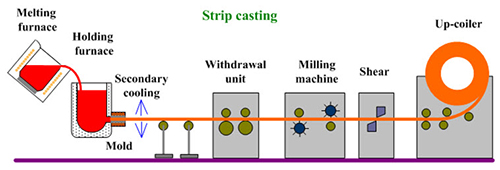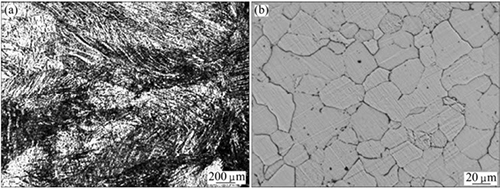Aluminum Strip Casting
Abstract
Aluminum strip casting represents a critical manufacturing process for achieving weight reduction in automotive applications, with over 50 years of established industrial use and growing popularity. This continuous casting technology enables the production of aluminum alloy sheets through twin-roll casting systems, where molten metal solidifies between counter-rotating horizontal rolls. Casting speeds are influenced by alloy composition and desired sheet thickness, with low-alloyed aluminum alloys successfully cast at ¼ inch thickness and speeds of 4-6 feet per minute. The process offers significant advantages including energy savings, improved productivity, and elimination of intermediate processing steps, making it essential for cost-effective lightweight automotive solutions.
Introduction to Aluminum Strip Casting Technology
Aluminum strip casting has emerged as a key contributor to weight-saving possibilities, particularly in the automotive industry. Although strip casting has been established for over 50 years, it continues to increase in popularity due to its efficiency and cost-effectiveness. This manufacturing process addresses one of the automotive industry's most important challenges: decreasing vehicle weight while maintaining performance and safety standards.
The Economic Imperative for Advanced Aluminum Processing
In the automotive industry, using aluminum alloys instead of traditional steels enables substantial weight reduction opportunities for overall vehicle construction. However, aluminum alloy sheets used for automobile bodywork are considerably expensive. Therefore, to make aluminum alloys cost-effective, it is necessary to develop low-cost aluminum alloy sheets that can handle intended application requirements without compromising quality or performance.
Evolution and Classification of Continuous Casting Processes
The development of continuous casters for aluminum products has been well documented over the past 50 years. Manufacturing processes are classified according to the thickness that can be produced, utilizing either thin slab casting or strip casting methodologies. Both thin slab and thin strip casting bypass the semi-finished product stage, reducing reheating requirements and eliminating numerous rolling steps. This streamlined approach provides considerable energy savings and significant improvements in productivity.
Strip casting was successfully commercialized in the early 1950s, establishing a foundation for modern aluminum processing. Aluminum alloy sheets are primarily produced using twin roll caster systems, which have proven highly effective for continuous production applications.
Twin Roll Casting Process Mechanics
In the twin roll casting process, molten metal is introduced between a pair of counter-rotating horizontal casting rolls, where solidification initiates when the molten metal contacts the roll surfaces. The solid metal shell formed on the roll surface advances toward the point of minimum clearance between the rolls, referred to as the nip point. When the metal passes through the nip, solidification becomes fully completed and the material undergoes controlled deformation as it exits the rolls.

Figure 1: Aluminum Strip casting
Low-alloyed aluminum alloys have been successfully strip cast at thicknesses of ¼ inch at rolling speeds of 4 to 6 feet per minute, achieving production rates of 50 to 70 pounds per hour per inch of width.
Process Limitations and Casting Speed Constraints
Casting speed faces restrictions due to several technical factors that impact product quality. An increase in casting speed will increase centerline segregation within the sheet structure. Specifically, the central zone of the sheet becomes enriched with eutectic forming elements including iron, silicon, nickel, and zinc, while simultaneously becoming depleted in peritectic forming elements such as titanium, chromium, vanadium, and zirconium.
Consequently, more highly alloyed materials, particularly AA5XXX and 6XXX series alloys, present greater challenges for strip casting production. The process also encounters limitations from the high separation force required to achieve desired sheet thickness, which further restricts achievable casting speeds. This occurs because the aluminum strip reaches solid state when entering the nip, resulting in required forces of several tons per inch of width.
Heat Transfer Challenges and Production Capabilities
Difficulty in achieving uniform heat transfer as rolling speed increases represents another significant impediment to increasing process speed. These thermal management challenges must be carefully balanced against production efficiency requirements. Despite these constraints, commercial strip casters successfully produce strips with thicknesses ranging from 1 to 15 millimeters, providing versatility for various automotive applications.

Figure 2: Microstructures of twin-roll continuous cast aluminum thin strip: (a) Solidified organization on cross section of aluminum strip; (b) Local magnification of (a)
Access Precise Properties of Aluminum Alloys Now!
Total Materia Horizon contains property information for 30,000+ alumiums: composition, mechanical, physical and electrical properties, nonlinear properties and much more.

Get a FREE test account at Total Materia Horizon and join a community of over 500,000 users from more than 120 countries.